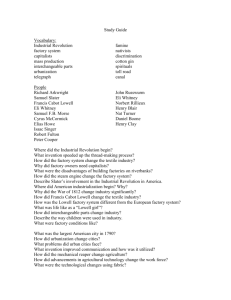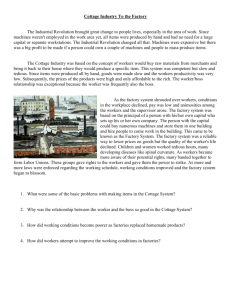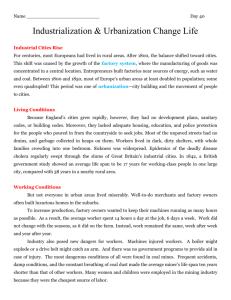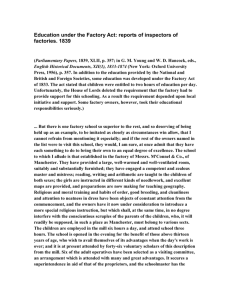Northern Factory Workers Placard
advertisement
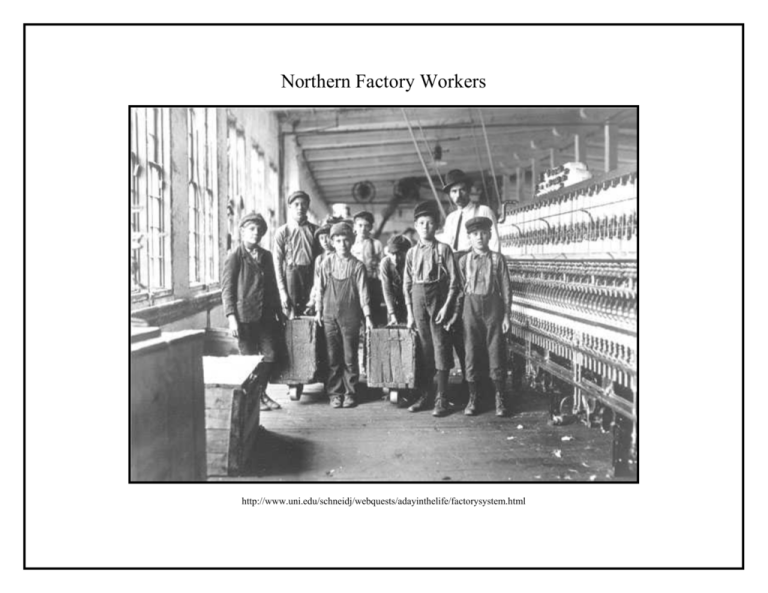
Northern Factory Workers http://www.uni.edu/schneidj/webquests/adayinthelife/factorysystem.html Northern Factory Workers The great prosperity enjoyed by the United States in the first half of the 19th Century can be attributed to farmers engaged in agriculture and factory workers employed in manufacturing. In 1810, the value of all manufactured goods (according to the official 1860 census) was about $200 million. In 1860, the “manufactories” of the USA produced almost $2 billion worth of materials. On the eve of the Civil War, the population of the United States was approximately 32 million people (both black and white); 20 million of whom lived in the north. Nearly one million Americans worked in industry and manufacturing rather than agriculture. After the Revolutionary War, the United States entered a period known as the Industrial Revolution. There was a marked increase in the use of tools and technology to produce products. In addition, businessmen began to bring machines and raw materials together in factories to streamline the manufacturing system. This enabled industrialists to increase productivity, minimize costs, and maximize profits. This Industrial Revolution occurred mostly in the northern states. Thousands of people began moving to cities to find jobs. People left farm work for factory jobs. Recently arrived immigrants took jobs in factories just to get started in America. Men, women, and children worked in dimly-lit, dangerous, filthy “sweatshops.” They almost always worked long hours for low pay. Unit: Lesson 2 Cities and towns were unprepared for the swift increase in their populations. Housing conditions were poor, sanitation systems nearly non-existent. These urban areas became overcrowded, crime ran rampant, disease spread rapidly, and fire was a constant threat. Over time, of course, city life improved. There were more opportunities to find work in cities; museums, libraries, schools, and theatres eventually appeared. Hard-working factory employees of the north were not unlike most antebellum (pre-war) citizens; they were as racist as most white Americans. They did not like the institution of slavery but they were not in favor of its abolition. Northern factory workers reasoned if four million southern slaves were set free, they would move north and take away jobs from whites by agreeing to work for even lower pay. Northern factory workers liked the Republican Party platform because it did not openly seek to abolish slavery; Republicans also called for the protection of naturalized citizens (former immigrants) and their rights. They also liked the speeches Abraham Lincoln gave in the mid-west, as well as the northeast, when he affirmed the Declaration’s premise that “all men were created equal.” To lower class factory workers, Lincoln was holding out hope that they would be treated equally in the eyes of the law and that each American, nativeborn or immigrant, should have equal opportunities to better his or her lot in life. Resource C.4.1







